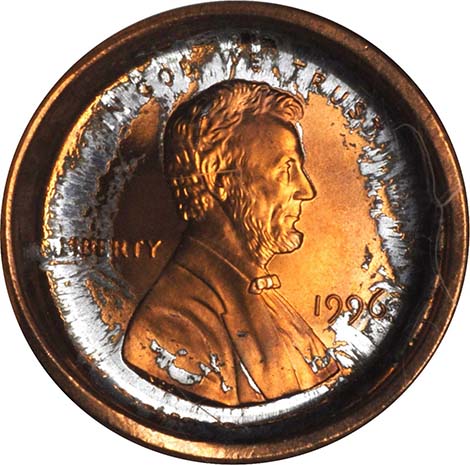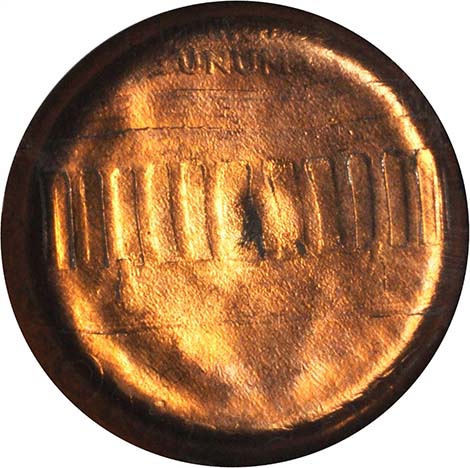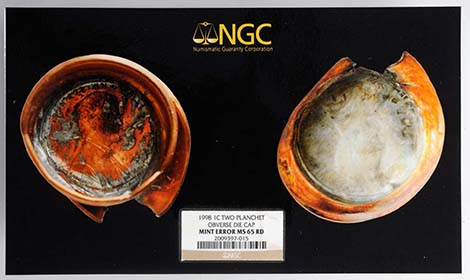The following is an interaction that I had with one of my customers who thought they had a genuine mint error:
Hi Michelle,
Here is my analysis of your coin. I cannot see the date on your coin because of the damage. However, it has the memorial reverse so it is dated 1959 or later.
My feeling, due to the damage, your coin (is) was a copper plated zinc cent. I think the copper was 100% removed revealing the now white only zinc cent.
There are machine tools which roll coins or mill them. The tools have a specific purpose for reducing the diameter of a planchet. A planchet is a blank which a coin is struck on. I think this is what was done to your coin.
Why is this done? By rolling a planchet (or a coin) while applying pressure you are squeezing, compressing the coin together, which makes it smaller. This process rolls up the edges at the same time. This narrowing the diameter of a planchet allows you to insert the planchet into a die press (where it would not fit before it was rolled up) and strike the planchet making a coin.
Ok, back to rolling the coin in the machine tool. If you keep rolling the coin it gets smaller and the metal pushes up and down around the perimeter of the ever shrinking coin so much so it replicates a die cap. Like your coin.
A die cap is generally described as a planchet not being ejected from the mint press and being struck multiple times by the die. A coin is struck so many times the metal flows up the side of the die creating a cap. This cap looks like a bottle cap, hence the name die cap. The crazier (deeper) the cap the more times the coin was struck.
Fun fact and important in comparison to your coin, the diameter of a US Mint made die cap is never smaller or reduced in size. I have attached two photos from StacksBowers.com of copper plated zinc cent die caps. You will see where some of the copper coating came off revealing the zinc below.




Genuine modern die caps like these, in nice new quality, are $350-$750 each as a general rule.
Also, when a die cap is created, the design on the other side never looks normal. Your coin has an obverse and a reverse. In the case of your coin the side opposite the cap would have not have been there or would have looked completely different if it were genuine.
When you look at the StacksBowers.com sold coins you will see what I mean about the back or opposite side of the cap die obliterating or changing what was supposed to be there.
Thank you for asking,
Marc Crane.

